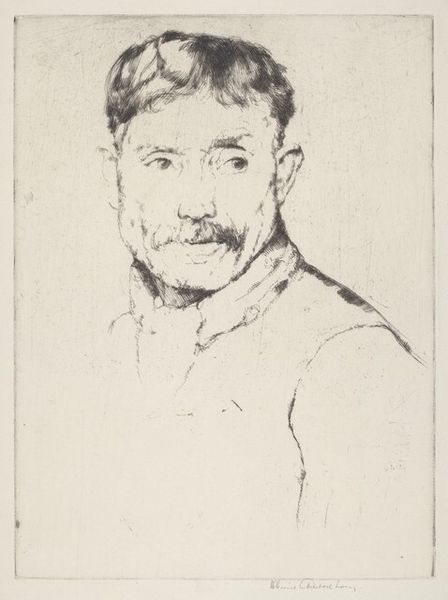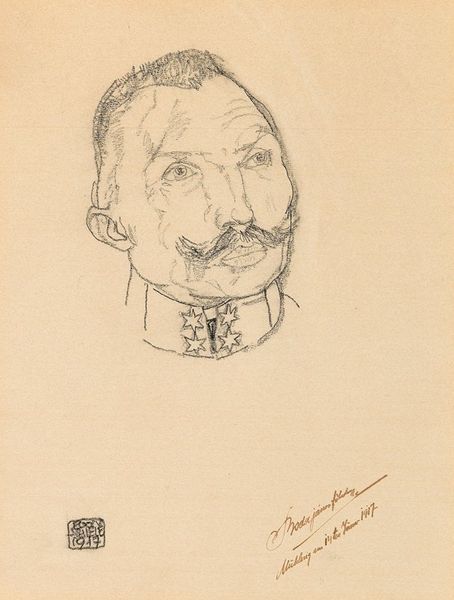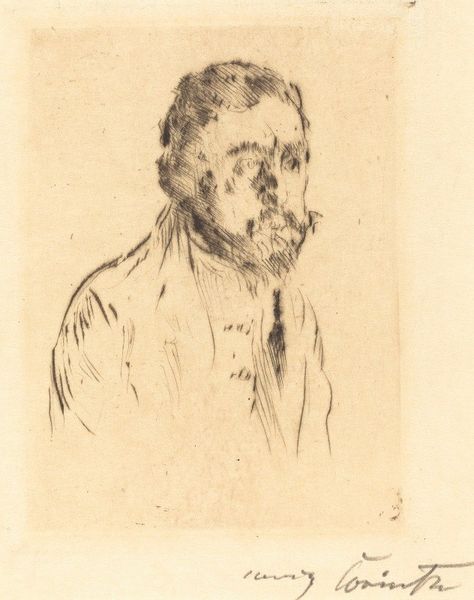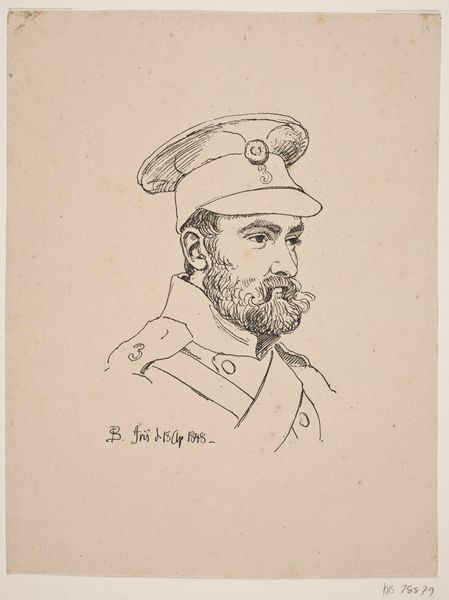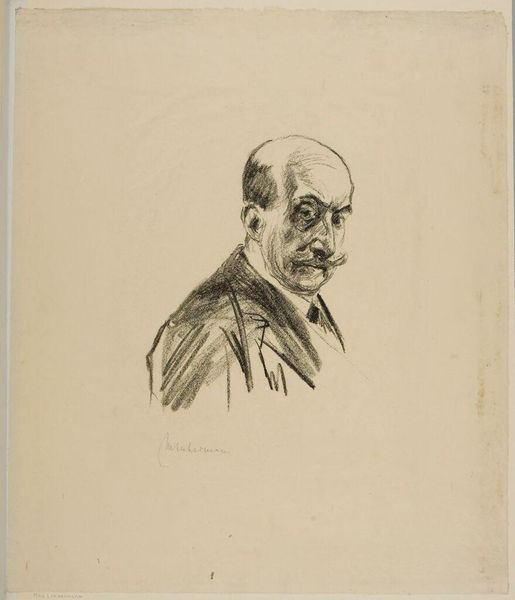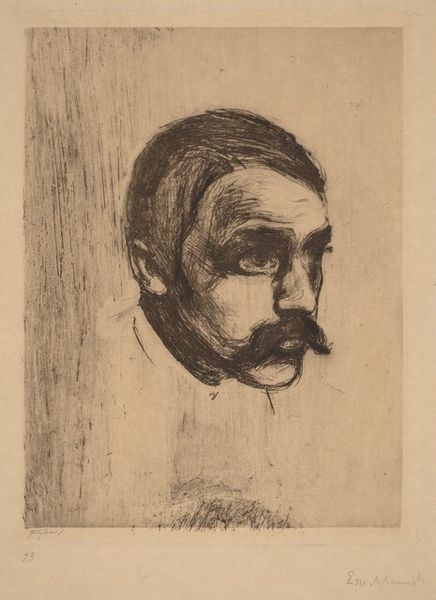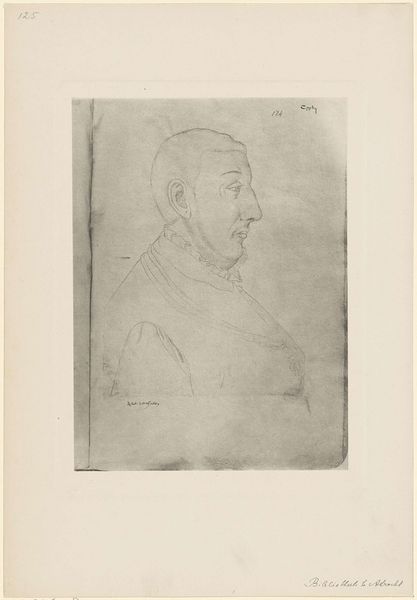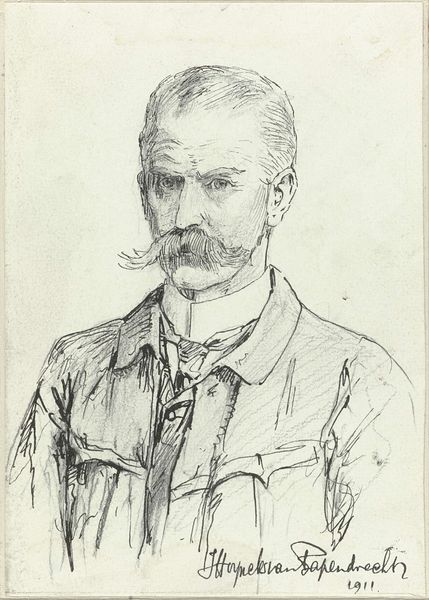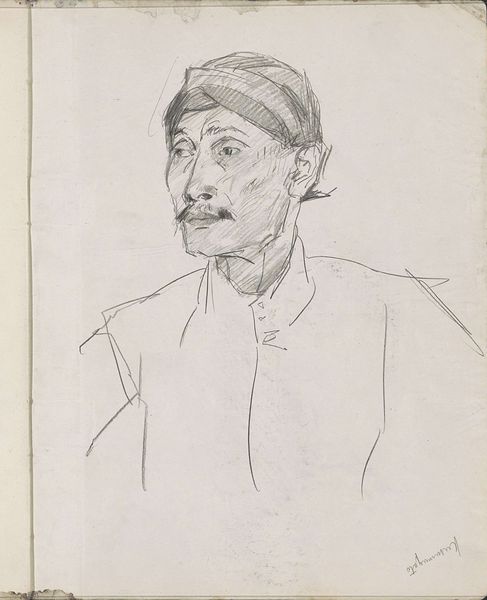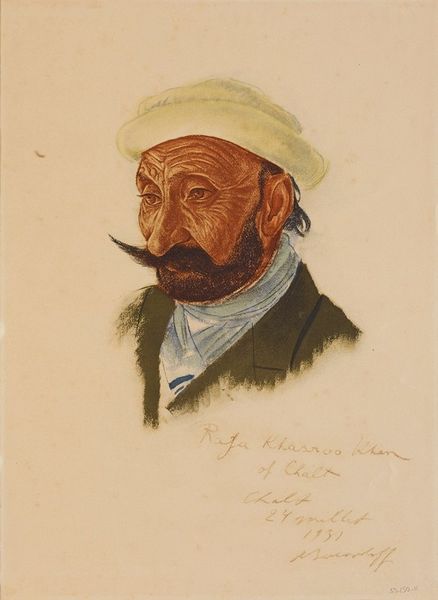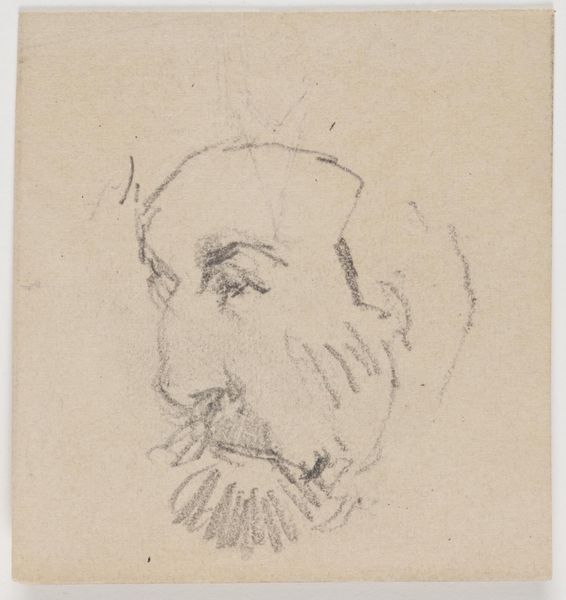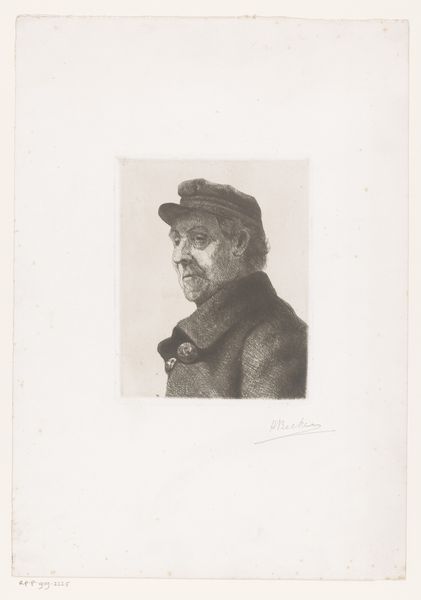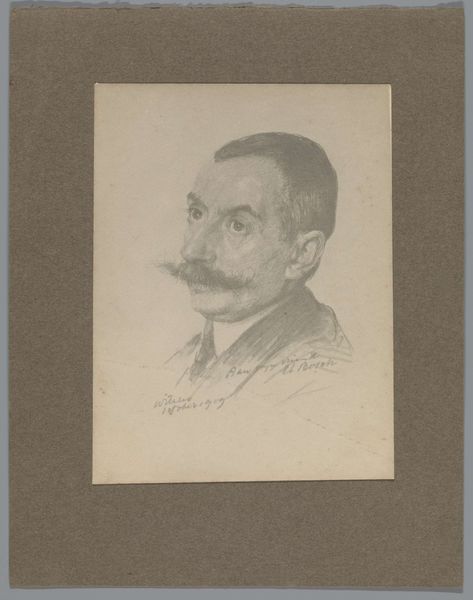
drawing, ink
#
portrait
#
drawing
#
comic strip sketch
#
imaginative character sketch
#
self-portrait
#
cartoon sketch
#
personal sketchbook
#
ink
#
idea generation sketch
#
ink drawing experimentation
#
pen-ink sketch
#
sketchbook drawing
#
storyboard and sketchbook work
#
realism
#
initial sketch
Dimensions: height 90 mm, width 86 mm
Copyright: Rijks Museum: Open Domain
Curator: Here we have Johannes Hari's "Buste naar links van een soldaat," created sometime between 1817 and 1882. It's an ink drawing, a simple yet evocative portrait. What’s your immediate impression? Editor: Austere, almost defiant. There's a certain guardedness in his eyes, despite the informal sketch-like quality of the drawing. It speaks to a sense of duty perhaps, mixed with vulnerability. Curator: It is a powerful study. Notice how the hat is slightly askew, lending a casual air that contrasts with the implied military attire and bearing. What sort of archetypes come to mind as you gaze upon the imagery, particularly around his garb? Editor: The military clothing, the beard, and that soft cap suggests a non-commissioned officer perhaps. However, the way he wears his beard challenges established norms; almost artistic, even bohemian, disrupting that authoritarian stereotype. This speaks volumes, in a time of rising nationalism and defined social roles. Curator: Interesting interpretation! I see in it echoes of Dutch masters, but translated into a contemporary setting and personal introspection, it calls forth historical echoes while also suggesting the timeless experience of military service across time and place. The eyes are particularly intriguing; do you see a tension between outward bravado and inward contemplation? Editor: Absolutely, the gaze is conflicted. There's a subtle rebellion brewing beneath the surface. We have a working-class soldier experiencing internal dissonance—perhaps contemplating the violence and injustice inherent in war itself. A subversive self-portrait, perhaps inadvertently questioning power. Curator: It definitely opens avenues to multiple interpretations! It speaks to the burdens and contradictions that figures like him carry across different historical periods, in his representation of state power while holding space for individualized identity. Editor: For me, Hari’s work is relevant even now, as the topic of warfare has risen back up. It's an invitation to confront not just the romanticism of heroism, but the nuanced experiences of those embroiled within political struggle. A necessary complexity. Curator: Indeed, and this complexity ensures the piece will resonate and continue inspiring reflection, particularly regarding ideas of military history, portraiture, and identity, well into the future.
Comments
No comments
Be the first to comment and join the conversation on the ultimate creative platform.

